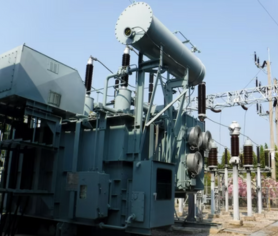
In any electrical grid, transformers are one of the most significant components. They play a critical role in ensuring efficient energy transmission between different circuits. But what makes the transformers tick?
If you didn’t already know, the performance of transformers depends largely on the quality of insulation. The insulation must be of high-quality if you want the transformer to keep performing optimally for a long time. It improves the efficiency of the machine, prevents failures, and makes sure that the transformer is operationally reliable.
If you visit a transformer company in Pune, they’ll tell you how important it is to maintain high-quality insulation for transformers. In this blog, we’re going to discuss the main reasons why insulation is such critical for transformers. So, without further ado, let’s get to it!
Why Is Insulation Important in Transformers?
Insulation in transformers serve multiple purposes, including –
-
Preventing Electrical Failures:
Insulation acts as a barrier that prevents short circuits between different components, such as windings and the core. -
Ensuring Energy Efficiency:
Proper insulation reduces energy losses, improving transformer efficiency. -
Enhancing Operational Lifespan:
Good insulation prevents overheating and damages, extending the transformer’s life. -
Maintaining Safety Standards:
High-quality insulation reduces the risk of fire hazards and electrical breakdowns, ensuring safe operation.
As it shows, insulation plays a crucial role in ensuring that the transformer is performing optimally. Thus, we have to ensure that we use high-quality insulation so that the transformer doesn’t encounter any failures.
Common Insulation Materials Used in Transformers
Different transformers have different kinds of insulation based on their types and voltage levels. Some commonly used insulation materials include –
-
Solid Insulation Materials:
1) Kraft Paper: A widely used insulation material in oil-filled transformers, known for its excellent dielectric strength.
2) Pressboard: Provides mechanical support and electrical insulation, used in both dry-type and oil-filled transformers.
3) Nomex: A high-performance synthetic material offering superior thermal and electrical resistance.
-
Liquid Insulation Materials:
1) Mineral Oil: Acts as both an insulating medium and a coolant, widely used in power transformers.
2) Silicone Fluid: Offers higher thermal stability and is more fire-resistant than mineral oil.
3) Natural Esters (Vegetable Oil-Based Fluids): A biodegradable and environmentally friendly option with good insulating properties.
-
Gaseous Insulation:
1) SF6 Gas (Sulphur Hexafluoride): Used in specialized high-voltage transformers due to its superior dielectric strength and arc-quenching properties.
When transformer manufacturers choose the insulation, they have to extremely careful. The final choice depends upon the voltage rating of the machine and its applications. Using improper or poor quality insulation can have a significant negative impact on the performance of these devices.
Risks of Poor Quality Insulation in Transformers
We have to use the best available insulation for the transformers. These devices are extremely important in voltage regulation in any power grid. We have to ensure that the transformers keep running optimally at all times to avoid running into accidents.
-
Increased Energy Losses:
If you use poor quality insulation in a transformer, it can lead to higher electrical resistance. When that happens, naturally, we lose a significant amount of energy in the form of heat. If the issue persists, it can also hinder the efficiency of the machine and increase the operational costs. -
Overheating and Thermal Breakdown:
In some cases, the insulation also acts as the cooling agent in a transformer. However, if the quality of the insulation isn’t up to the mark, it can’t handle the tasks. Failing to cool down the heat generated during transformer operation can lead to overheating and Thermal breakdowns. Eventually, that leads to pre-mature transformer failure. Thus, we have to be extremely careful while picking the insulation. -
Electrical Short Circuits:
If the insulation is weak or has become damaged, that gets even more concerning. It increases the risks of electrical short Circuits between windings. Besides the danger posed by short circuits, it can also lead to transformer failures and costly repairs. -
Fire and Safety Hazards:
Imagine that the insulation of the transformer isn’t good enough and it leads to a short circuit! Naturally, that poses the threat of fire hazards in any power grid. Especially if we’re talking about a high voltage transformer, the risk factor is even higher.
Using High Quality Insulation for Transformers
If you want to keep the transformer efficient and safe, the insulation has to be superior. It helps in –
-
1) Better dielectric strength
2) Better heat resistance
3) Better mechanical durability
4) Lowered maintenance costs
Conclusion
High-quality insulation is a crucial factor in transformer performance, efficiency, and safety. Choosing superior insulation materials and implementing regular maintenance practices can prevent electrical failures, enhance energy efficiency, and extend the operational lifespan of transformers.
For industries and businesses relying on transformers for power distribution, investing in high-performance insulation is a smart choice that ensures long-term reliability and cost savings.